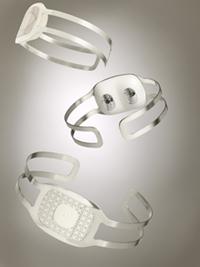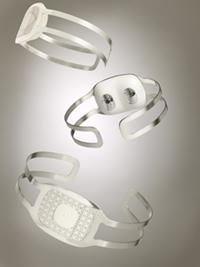MEMS Enabling a Health & Medical Revolution
February 5, 2013

One of the most exciting things lately about being director of the MEMS Industry Group (MIG) is feeling the slow and powerful build of momentum that precedes a flurry of wins for MEMS technology in health and medical applications. Someday soon many consumers will use MEMS to monitor and maintain their health on a daily basis.
What's driving this revolution in health and medical devices? Beyond the prevalence of wireless networks -- which is a key enabler -- there is a convergence of factors that bring MEMS into this space. MEMS miniaturizes, and it improve safety and reliability. It also provides an integrated solution. Alone on an armband or embedded in a T-shirt, sensors are just a bunch of sad, lonely chips. But wirelessly connect these sensors (including MEMS) via Bluetooth to a cloud computing network, as well as to social networks such as Facebook, and these sensors open up a huge world of opportunities for health and medical providers, designers, integrators, suppliers, and innovators.

Consumers will be the winners here, with more choices and the ability to monitor and maintain their own health, medical treatment, and drug therapies. They will demand non-intrusive monitoring, which is the main reason that the market for wearable wireless sensors (including MEMS) is expected to grow to 400 million devices by 2014.
The time is right for MEMS. The top two healthcare issues in the US are controllable by lifestyle changes (Type II diabetes and heart disease). These are lifestyle changes that consumers could and will control through intelligent sensors that give them reliable, usable information on which their doctors can also rely. And while they may not know it, by demanding accurate, real-time diagnostics and simpler dosing -- while caring more about their overall health -- consumers are inadvertently creating a path for MEMS to play a bigger role in their suite of medical solutions.
There are already numerous MEMS-based products that blur the line between the consumer and medical markets. Here are a few of my favorite examples:
Bodymedia FIT System acts as a "personal GPS" empowering consumers to monitor their overall fitness -- measuring the intensity of their workouts and also the quality of sleep, an important factor in weight loss.
LumoBack, a wearable device that uses sensor and biofeedback to empower consumers to improve their posture, reduce back pain, and improve their overall quality of life.
Proteus Digital Health Feedback System gives consumers the ability to monitor and manage medication and physiologic data.
As we forge ahead with wirelessly connected health and medical apps, we must also grapple with medical privacy. Groups like the XPRIZE Foundation, which is helping lead this revolution of wireless digital, MEMS-enabled health and medical through their Qualcomm Tricorder XPRIZE and Nokia Sensing X Challenge, is embracing this issue. We also need you -- the design community -- to come up with the next new application of a health/medical product that may not cure cancer, but will help a cancer patient manage her pain as she suffers through radiation treatments. Or maybe you'll design ______ (fill in the blank with your imagination and your engineering talent).
Related posts:
About the Author(s)
You May Also Like



